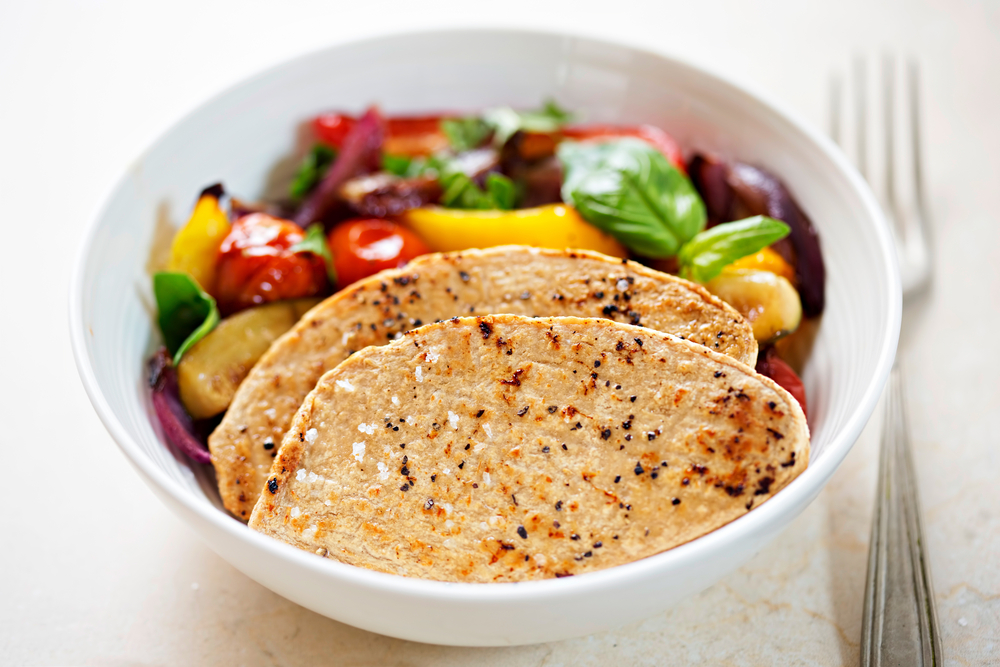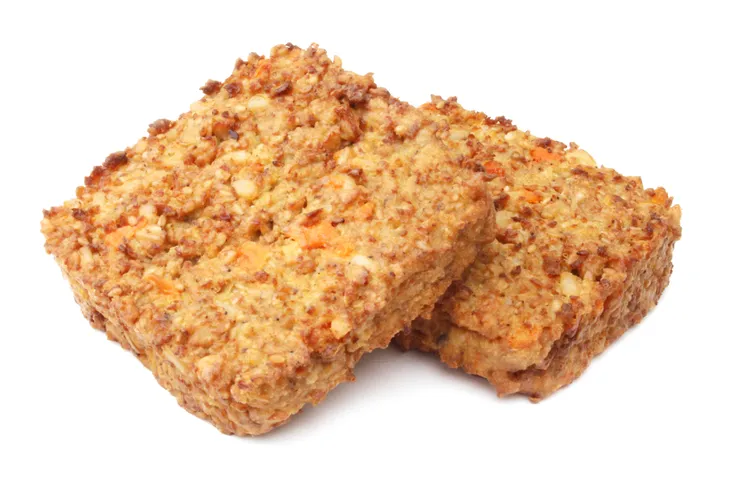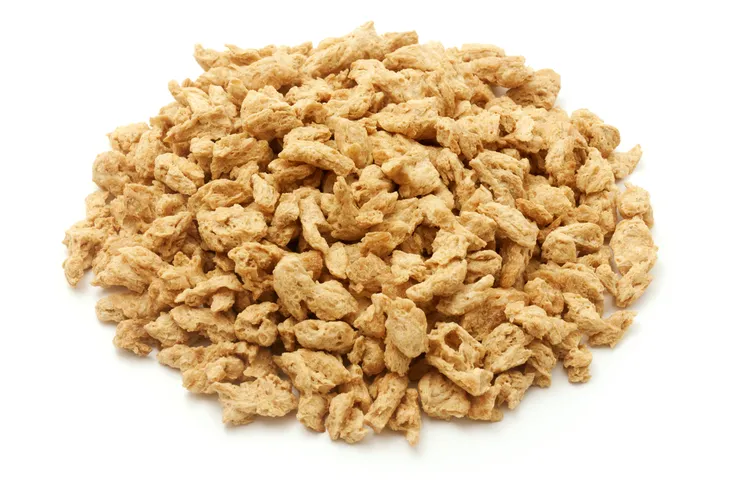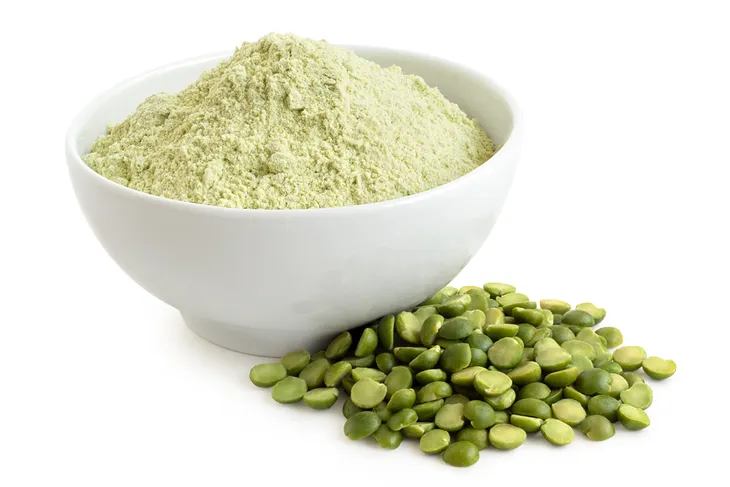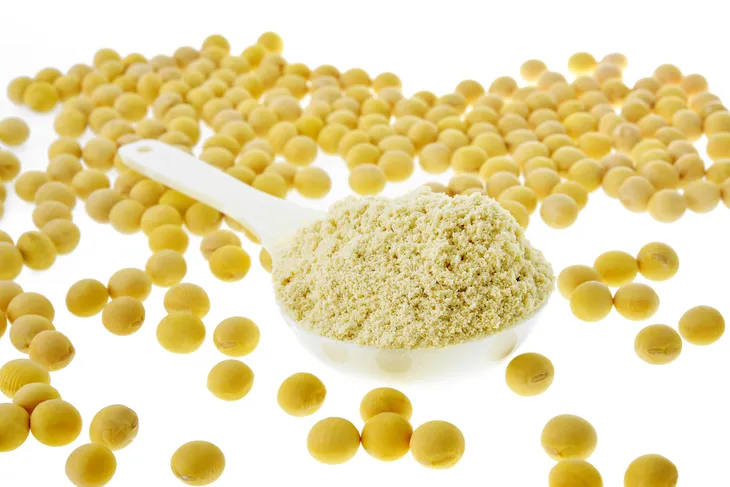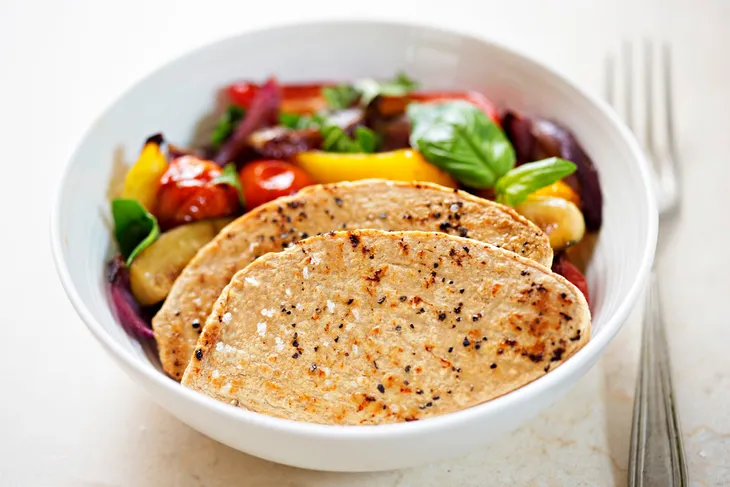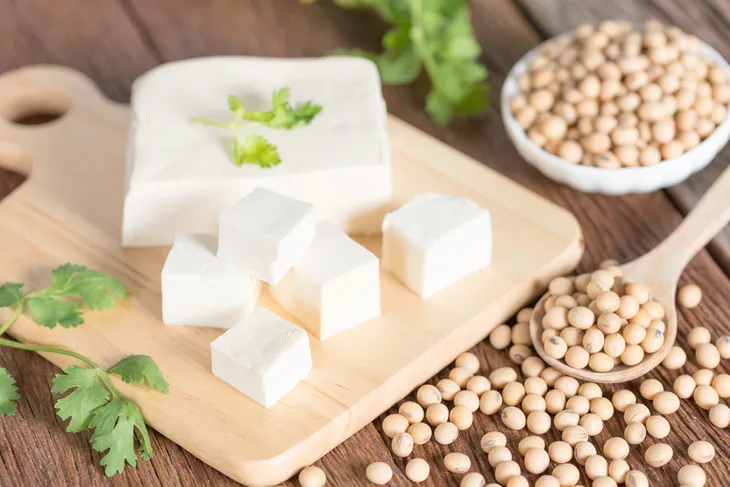If you’re a newbie vegetarian, or if you’ve recently decided to go vegan, selecting a meat alternative from the grocery store can be a little overwhelming. You’ll run into meat substitutes with all sorts of strange names—like Tofurkey, TVP (or textured vegetable protein), tempeh, and even something called seitan. Never fear! Your guide to vegetarian and vegan meat substitutes is here to save the day…
Seitan
Don’t let the name fool you—there’s nothing evil about this high-protein form of wheat gluten. Seitan is what’s left after the starches are rinsed away and only the vital wheat gluten (or what is commonly referred to as the “white meat”) remains.
Seitan has a chewy, rubbery texture that’s slightly salty in flavor—think of a slight soy sauce tinge. And it provides an excellent source of protein (15-grams of protein per 2-ounces) for those with soy sensitivities. Know that if you reach for Tofurky (or veggie deli meats) in your grocery store, you’re almost always buying a seitan-based product.
Textured Vegetable Protein
TVP (or textured vegetable protein) is basically heated and pressurized soy flour that’s had the fat removed. TVP usually comes in a roll that’s sliced or in frozen chunks, which is why it’s often utilized in veggie burgers and for veggie ground round used in meatless sauces, tacos, and veggie chilies.
TVP on its own has a chewy, meat-like texture with little flavor, which is why it’s often used as an absorbing protein in sauces and stews. TVP is fairly low in calories—it contains roughly 80-calories and 15-percent protein in each 12-gram serving. However, this product is often loaded with added preservatives and artificial flavors and colors, which makes it best consumed moderately.
Pea Protein
I love split pea soup, which likely explains why pea protein is one of my favorite meat alternatives. Made from yellow split peas, this soluble form of protein is often found in frozen dinners and protein-fortified processed foods. Tasteless varieties are often featured in energy bars.
Pea protein is good for vegetarians and vegans with sensitive tummies (or wheat and soy intolerances). The dried, ground flakes or crumbles don’t offer a complete source of protein—more like a slight protein enhancement—which can be incorporated and spiced and seasoned to fit the meal.
Soy Protein
Soy protein is made from soybeans that are dehulled and ground into a fine powder once the fat is removed. Soy protein is made up of approximately 90-percent pure protein energy, which is why it’s commonly used in a wide array of meatless products—including faux meat and chicken strips, veggie burgers, protein-fortified processed foods, energy bars, protein powders, and even cereal.
You’ll get roughly 15-grams of complete protein and 6-grams of fiber in every 3-ounce serving of soy protein. However, products that contain soy protein isolate are highly processed, which means they’re high in sodium and often hexane, an airborne neurotoxin. If you eat a lot of soy protein, try to buy organic.
Mycoprotein
Mycoprotein is the fungi of the meatless alternatives—meaning it’s developed from vat-grown and fermented Fusarium Venenatum fungus and then bound with egg whites (or other binding agents) to form a convincing meat-like texture and taste. This plant-based, soy free protein makes an appearance in popular Quorn-brand meatless products in the U.K., Ireland, and Canada.
But before you decide to join team Mycoprotein, consider the anti-Quorn campaign launched by the Center for Science in the Public Interest (CSPI), one of North America’s largest nutrition, health, science, food safety and policy advocates. According to the CSPI, Quorn products have been linked to severe allergic reactions to molds or fungi and result in hives, nausea, breathing difficulties, and vomiting often the very first time the product is consumed.
Tempeh
Tempeh is another immensely popular meat-free protein. Made from fermented (mold-infused) soybeans, tempeh forms a thick block that can be sliced and grilled or cut away in dense chunks for faux bacon, stir fry, or sandwich filler. A 3-ounce serving of tempeh delivers 7-grams of fiber, 16-grams of protein, and additional zinc and iron (due to fermentation).
Although tempeh has a light, tangy flavor (due to the fermentation process) and natural nutty texture, it absorbs more flavors well. I personally like the taste of tempeh a lot more than tofu, however, tempeh is often GMO produced, which means it’s loaded with artificial colors, flavors, and preservatives unless you buy specifically organic.
Tofu
Last but definitely not least, tofu (or bean curd), made from soaked and curdled whole soybeans that are formed into blocks, is perhaps the most popular meat alternative for vegans and vegetarians. Widely available in grocery stores and vegetarian markets, the watery, sponge-like texture of tofu lends to its absorbability. You can purchase tofu in silken (smooth), firm, and extra firm textures for cooking, baking, or dessert preparation. And bean curd has the ability to soak up whatever flavor you add.
On the positive side, tofu encompasses the 9 essential amino acids—solidifying it as a complete source of protein (at 9-grams of protein per serving). Tofu also absorbs calcium when it’s prepared with calcium salt or if it has calcium sulfate among the ingredients. However, on the negative side, soy lacks essential fiber and often contains isoflavones, natural estrogen-affecting chemicals that have been linked to increased cancer risk for women and men with low testosterone.
